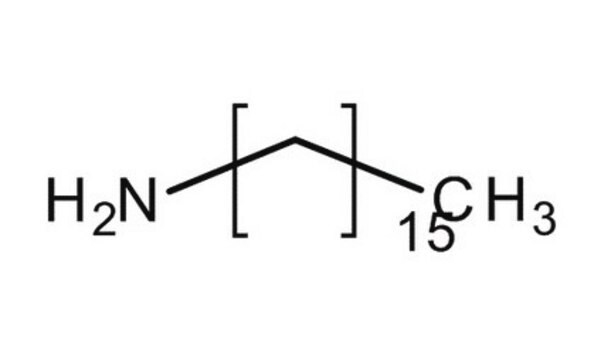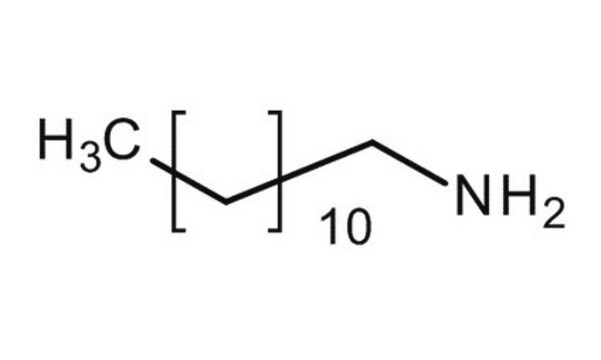H7408
Hexadecylamine
technical grade, 90%
Synonyme(s) :
1-Aminohexadecane, Cetylamine, HAD
About This Item
Produits recommandés
Qualité
technical grade
Niveau de qualité
Pression de vapeur
<1 mmHg ( 20 °C)
Pureté
90%
Point d'ébullition
330 °C (lit.)
Pf
43-45 °C (lit.)
Chaîne SMILES
CCCCCCCCCCCCCCCCN
InChI
1S/C16H35N/c1-2-3-4-5-6-7-8-9-10-11-12-13-14-15-16-17/h2-17H2,1H3
Clé InChI
FJLUATLTXUNBOT-UHFFFAOYSA-N
Vous recherchez des produits similaires ? Visite Guide de comparaison des produits
Catégories apparentées
Description générale
Application
- Interfacial structuring of liquids: Hexadecylamine is explored for its role in the solvent-assisted interfacial association of oppositely charged polyelectrolytes and amphiphiles, offering potential advancements in the structuring of liquids for various industrial and scientific applications (Bak et al., 2023).
- Efficient light-to-thermal conversion: Additionally, hexadecylamine is used in ZnO nanorods loading with fatty amine as composite phase change materials (PCMs) device, enhancing light-to-thermal and electro-to-thermal energy conversion, applicable in energy storage technologies (Cao et al., 2023).
Mention d'avertissement
Danger
Mentions de danger
Classification des risques
Aquatic Acute 1 - Aquatic Chronic 1 - Asp. Tox. 1 - Eye Dam. 1 - Skin Corr. 1A - STOT RE 2
Organes cibles
Gastrointestinal tract,Liver,Immune system
Code de la classe de stockage
8A - Combustible corrosive hazardous materials
Classe de danger pour l'eau (WGK)
WGK 3
Point d'éclair (°F)
285.8 °F - closed cup
Point d'éclair (°C)
141 °C - closed cup
Équipement de protection individuelle
Eyeshields, Faceshields, Gloves, type P3 (EN 143) respirator cartridges
Faites votre choix parmi les versions les plus récentes :
Déjà en possession de ce produit ?
Retrouvez la documentation relative aux produits que vous avez récemment achetés dans la Bibliothèque de documents.
Les clients ont également consulté
Notre équipe de scientifiques dispose d'une expérience dans tous les secteurs de la recherche, notamment en sciences de la vie, science des matériaux, synthèse chimique, chromatographie, analyse et dans de nombreux autres domaines..
Contacter notre Service technique
















